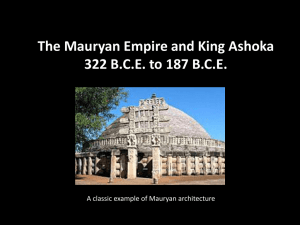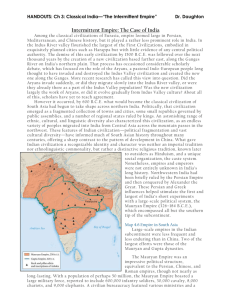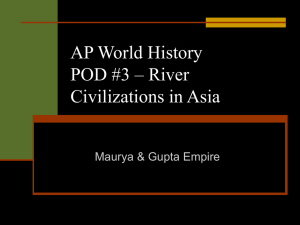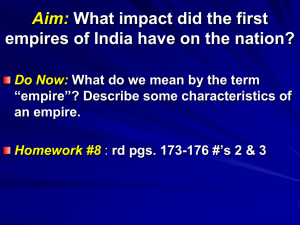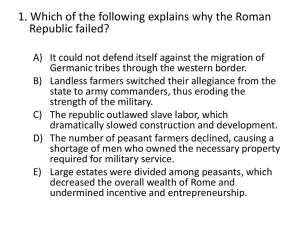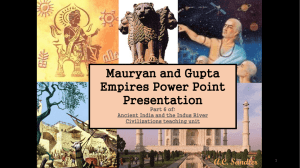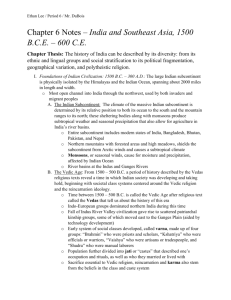Decline
advertisement
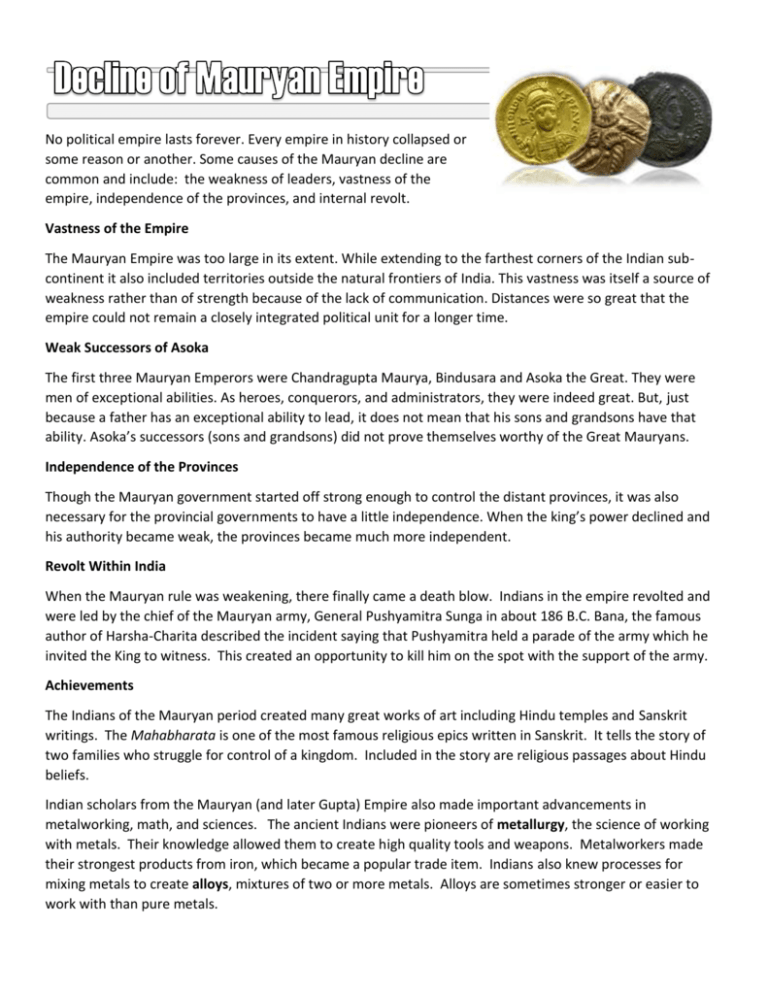
No political empire lasts forever. Every empire in history collapsed or some reason or another. Some causes of the Mauryan decline are common and include: the weakness of leaders, vastness of the empire, independence of the provinces, and internal revolt. Vastness of the Empire The Mauryan Empire was too large in its extent. While extending to the farthest corners of the Indian subcontinent it also included territories outside the natural frontiers of India. This vastness was itself a source of weakness rather than of strength because of the lack of communication. Distances were so great that the empire could not remain a closely integrated political unit for a longer time. Weak Successors of Asoka The first three Mauryan Emperors were Chandragupta Maurya, Bindusara and Asoka the Great. They were men of exceptional abilities. As heroes, conquerors, and administrators, they were indeed great. But, just because a father has an exceptional ability to lead, it does not mean that his sons and grandsons have that ability. Asoka’s successors (sons and grandsons) did not prove themselves worthy of the Great Mauryans. Independence of the Provinces Though the Mauryan government started off strong enough to control the distant provinces, it was also necessary for the provincial governments to have a little independence. When the king’s power declined and his authority became weak, the provinces became much more independent. Revolt Within India When the Mauryan rule was weakening, there finally came a death blow. Indians in the empire revolted and were led by the chief of the Mauryan army, General Pushyamitra Sunga in about 186 B.C. Bana, the famous author of Harsha-Charita described the incident saying that Pushyamitra held a parade of the army which he invited the King to witness. This created an opportunity to kill him on the spot with the support of the army. Achievements The Indians of the Mauryan period created many great works of art including Hindu temples and Sanskrit writings. The Mahabharata is one of the most famous religious epics written in Sanskrit. It tells the story of two families who struggle for control of a kingdom. Included in the story are religious passages about Hindu beliefs. Indian scholars from the Mauryan (and later Gupta) Empire also made important advancements in metalworking, math, and sciences. The ancient Indians were pioneers of metallurgy, the science of working with metals. Their knowledge allowed them to create high quality tools and weapons. Metalworkers made their strongest products from iron, which became a popular trade item. Indians also knew processes for mixing metals to create alloys, mixtures of two or more metals. Alloys are sometimes stronger or easier to work with than pure metals. Ancient Indians were skilled in the medical sciences and were the first to practice inoculation, injecting someone with a small dose of a virus to help him or her build up defenses to a disease. Indian doctors also performed surgeries to repair broken bones, treat wounds, and remove tonsils. Ancient Indians also developed an interest in astronomy, the study of the stars and planets. Indian astronomers knew of seven of the planets of our solar system, and knew that the sun was a star. They could also predict the eclipses of the sun and moon. Scholars of the later Gupta Empire were among the most advanced mathematicians of their day. They developed many elements of our modern math system. The numbers we used today, called the Hindu-Arabic numerals, were created by Indian scholars and brought to Europe by the Arabs. The Indians were also the first to create the zero. Although it seems like a small thing, modern math would not be possible without it.
